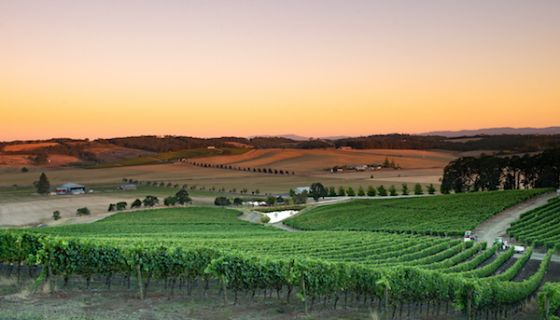The Van Duzer Corridor AVA in Oregon’s Willamette Valley has been officially approved by the TTB, the US regulatory body. The announcement came on Friday after seven years in the TTB approval process. While the application for the new AVA had been all but signed, Trump’s policy of reducing new regulations had severely slowed the final approval process for not only this AVA but all AVAs within the United States (see, for example, Petaluma Gap – Trump's first new AVA). The proposal was originally submitted in 2011 and was close to completion before Trump took office. However, immediately after becoming President, Trump announced he would forego creating any new regulations without having first eliminated others. Since an AVA is a legal designation, the TTB approval process fell within Trump’s de-regulation tactics.
With the new Van Duzer Corridor AVA, the larger Willamette Valley AVA is now home to a total of seven nested AVAs including Dundee Hills, Yamhill-Carlton, Chehalem Mountains, Ribbon Ridge McMinnville, and Eola-Amity Hills, all of which were approved between 2005 and 2006. The original Willamette Valley AVA was recognised in 1983. See this map.
The new Van Duzer Corridor area has long been recognised as one of the coldest and most wind-exposed portions of Willamette Valley. The planted area within the recently certified AVA is slightly less than 1,000 planted acres (404 ha) within almost 36 square miles (93 sq km), directly east of the Coastal Range beginning at a low spot in the mountains that effectively funnels cold Pacific Ocean influence into the valley. The AVA gets its name from this low spot in the mountains, also called the Van Duzer Corridor. The Van Duzer influences weather through the entire Willamette Valley, with a breeze guaranteed every afternoon beginning around 2 pm, followed by a nightly fog. The mostly low-lying area within the new AVA is most directly affected by these oceanic influences.
Benefits of the wind include reduced disease pressure thanks to the drying effects, but it also tends to result in smaller yields and thicker grape skins, thus leading to wines of greater concentration and structure. Winds are often stronger than the 8 mph (13 kph) limit known to close vine leaf stomata and thus slow acid respiration, and so wines in these windy areas also tend to have naturally high acidity levels. The evening fog helps moderate ambient temperatures, creating more even, slower ripening conditions. The area tends to avoid the more intense heat or cold sometimes experienced elsewhere in the region. As a result, harvest is often slightly later than in the warmer parts of the valley to the north.
Eola-Amity Hills was already known for its vineyards’ being directly influenced by the Van Duzer winds and fog. Until recently, vineyards on the western side of the Eola-Amity Hills AVA have been far fewer than on the eastern side thanks to the more direct impact of the winds reducing yields and thus reducing economic viability. For similar reasons, few vineyards had been established within the lower-lying area west of the Eola-Amity now known as the Van Duzer Corridor AVA.
But more recently, public interest in wines with greater natural acidity and freshness has made it more desirable to have vineyards planted in areas that help ensure these characteristics. Even so, they are still slower to develop. For locals in Willamette Valley, the Van Duzer Corridor area has been recognised as resulting in even smaller yields and more intense wines than the Eola-Amity Hills. Wineries such as Van Duzer, Johan and Firesteed were among the first to establish vineyards in the area. The eastern boundary of the Van Duzer Corridor AVA coincides with the western boundary of the Eola-Amity Hills.
Soils within the Van Duzer Corridor are a mix of marine sedimentary soils like those known in areas such as Yamhill-Carlton, and the lowest-lying land has mixed soils settled by the Missoula floods that helped shape the entire Pacific Northwest thousands of years ago. The marine sedimentary soils also contribute to the intensity of the wines from the region. The combination of lower yields, thicker skins, and these dry, firm sedimentary soils means Pinots from the Van Duzer Corridor area tend towards notes of dark fruits and earthy flavors with plenty of tannins and vibrant acidity. How those characteristics are moderated or intensified in the cellar of course varies by producer and vintage.
Today there are six wineries within the Van Duzer Corridor AVA and 18 commercial vineyards that serve as fruit sources for other wineries. The six bonded wineries are Van Duzer, Johan, Andanté, Firesteed, Chateau Bianca, and Left Coast Cellars. Previously, wines from this area could use only the Willamette Valley AVA or Oregon on their labels since they were grown outside any of the six so-far recognised nested AVAs. These six wineries, or any that source fruit from within the newly recognised AVA, can choose to use the Van Duzer Corridor AVA on their labels for any new wines bottled as of 14 January 2019.
The Willamette Valley currently has four more potential AVAs moving through the TTB approval process. There is no way to predict when or if those other AVAs might be officially recognised.













